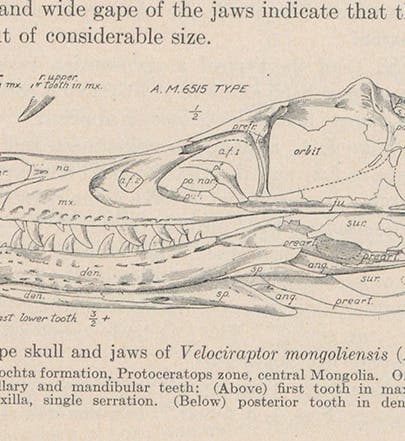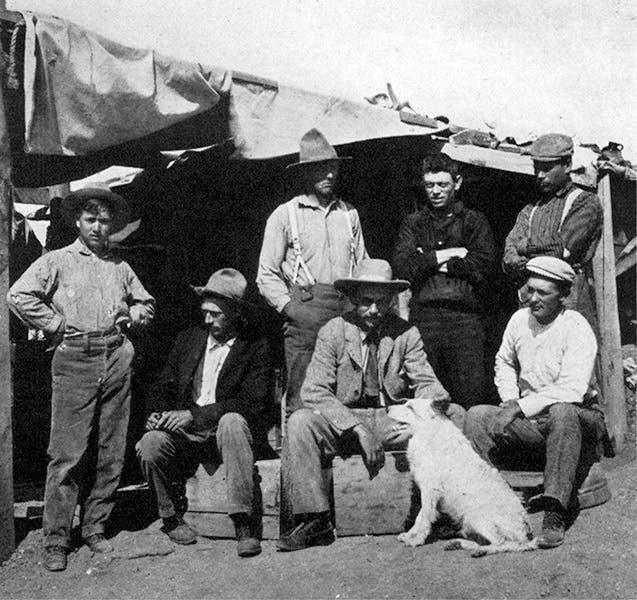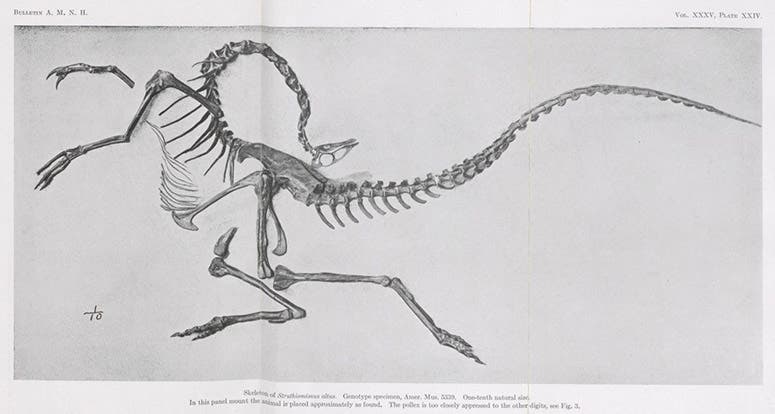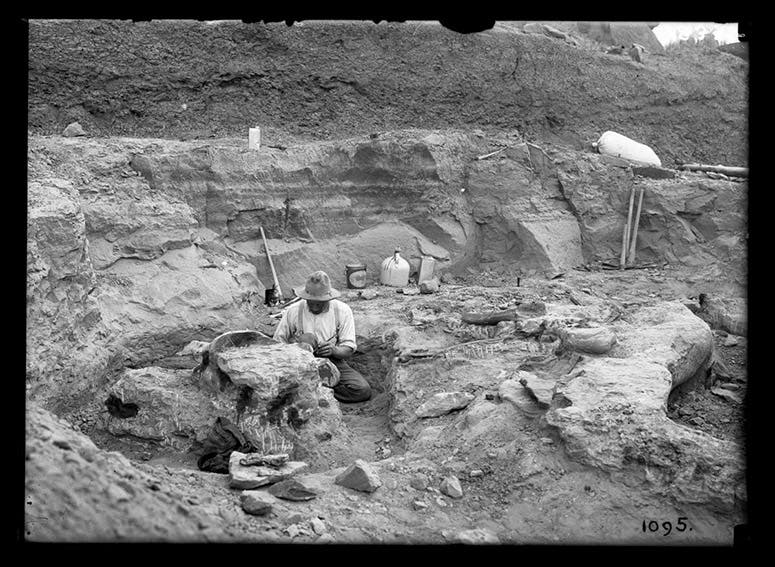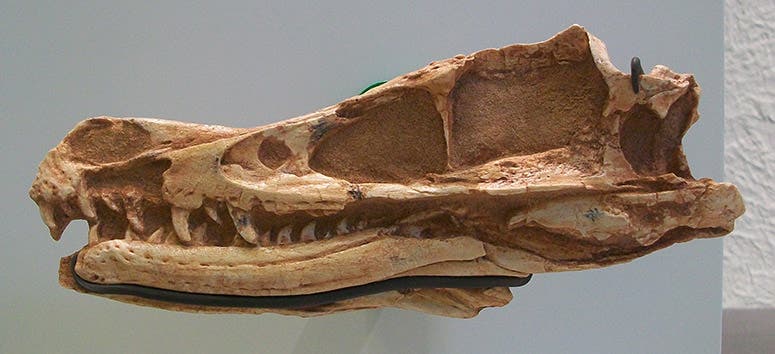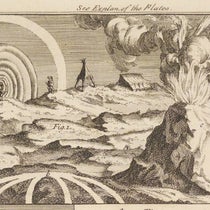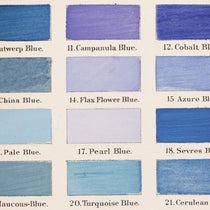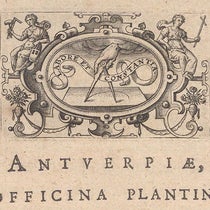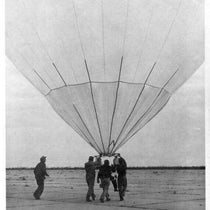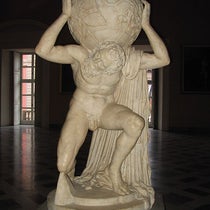Scientist of the Day - Peter Kaisen
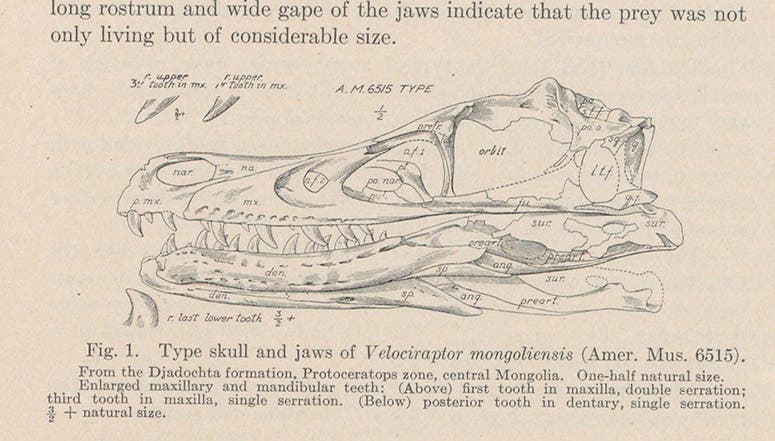
The restored skull of Velociraptor, discovered by Peter Kaisen in 1923, drawing in a paper by Henry F. Osborn in American Museum Novitates, no. 144, 1924 (Linda Hall Library)
Peter Kaisen was an American dinosaur hunter and preparator at the American Museum of Natural History (AMNH) in New York City. His birth and death dates are unknown, as is Kaisen himself, even to those who work on dinosaurs. He doesn’t even have an entry on Wikipedia. But if you make a note every time his name pops up when you are reading about the history of dinosaur discovery, you gradually realize that he had a role, often the primary role, in some major finds. He is under-appreciated because he was always an assistant, and those he assisted usually got the credit for whatever Kaisen turned up. We hope to redress those injustices in this post.
Kaisen entered the historical record in a famous photo taken in 1899 of a group of AMNH workers at Bone Cabin Quarry, Wyoming (second image). It is famous because it shows, seated at front, Walter Granger, Henry F. Osborn, and W.D. Matthew, the big three fossil hunters at the AMNH. But Kaisen was there too, in the rear, at the far right. You cannot really make out his features.
In 1900, Kaisen was part of the crew that discovered the first specimen of Ornitholestes at Bone Cabin Quarry. Ornitholestes was discussed by Osborn in an article in 1903; then he drastically revised his reconstruction in a paper published in 1916, an article we happen to have scanned, since we displayed it in our exhibition, Paper Dinosaurs. The article focused on three dinosaurs: Ornitholestes, Struthiomimus, and Tyrannosaurus, with a splendid folding plate illustrating the Museum’s new panel mount of Struthiomimus. The specimen (AMNH 4339) had been found by Barnum Brown in 1914. Kaisen prepared that mount for the Museum. It is a truly beautiful display.
Kaisen worked with the much better-known bone hunter Barnum Brown in the 1900s; indeed Brown snapped a photo of Kaisen at work in Hell Creek, Montana, where Brown found the original Tyrannosaurus specimen (fourth image). Kaisen found the first Ankylosaurus specimen in 1906 at Hell Creek; it is designated AMNH 5895. Brown described and named this armored dinosaur in 1908, and usually gets the credit for its discovery. But Kaisen is the one who unearthed it. Ankylosaurus, with its armored plates and club-like tale, is a staple of any dinosaur set. In this photo of my own collection of Carnegie dinosaurs, Ankylosaurus is the green one in the center (fifth image)
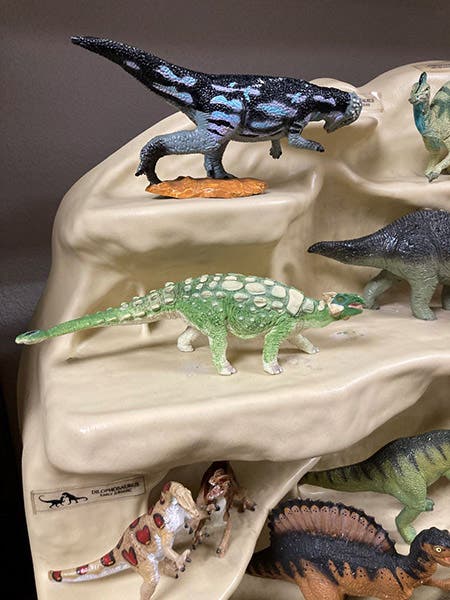
A Carnegie Museum replica of Ankylosaurus, the green armored dinosaur in the center, the original of which was discovered by Peter Kaisen in 1906; author’s collection (photo by the author)
Kaisen’s best known dinosaur discovery came as a result of his participation in the Second Central Asiatic Expedition, a 1923 exploration of the Gobi Desert in Mongolia, led by Roy Chapman Andrews. Andrews later published a book about the Central Asiatic expeditions and included a group photo of the 1923 expedition (sixth image). The middle row contains all of the AMNH personnel. Andrews put himself at the center, naturally, and next to him, on our left, is Osborn. Walter Granger, Kaisen’s immediate boss, is at far left. And Kaisen sits at the far right of that row. It is the third of the four photos known to me that show Kaisen.
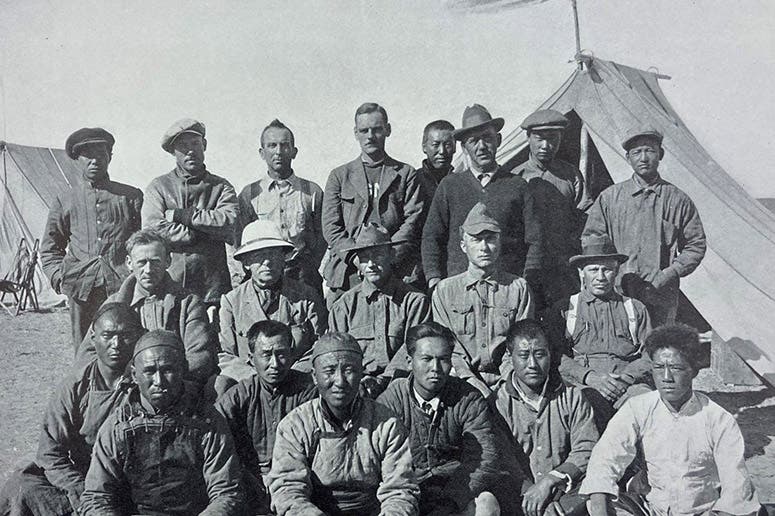
Group photo of the 1923 Central Asiatic Expedition; Peter Kaisen is at the right of the second row (Roy Chapman Andrews is in the center of that row), in The New Conquest of Central Asia: A Narrative of the Explorations of the Central Asiatic Expeditions…, by Roy Chapman Andrews; 1932 (Linda Hall Library)
Anyway, on this date, Aug. 11, 1923, as Kaisen was rock-hammering his way through the red sandstone at the base of the Flaming Cliffs in Mongolia, he found the crushed skull of a small theropod, as well as some phalanges, including a formidable claw. He put them in his collecting bag, brought them home to the museum later that year, and gave them to Osborn, who had the skull restored to its proper shape (probably by Kaisen). In a paper in 1924, Osborn described this new theropod, and gave it a name: Velociraptor. He included a drawing of the reconstructed skull in his paper (first image), and another of the claw (seventh image). We showed this paper as well in our Paper Dinosaurs exhibition.
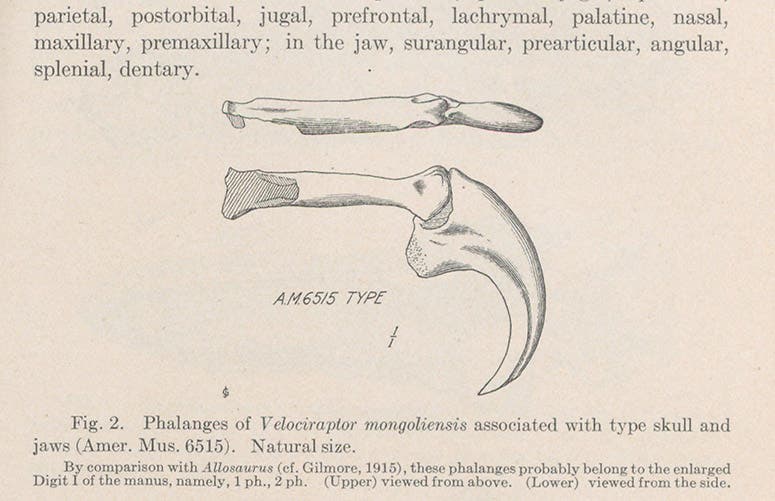
The formidable claw of Velociraptor, discovered by Peter Kaisen in 1923, drawing in a paper by Henry F. Osborn in American Museum Novitates, no. 144, 1924 (Linda Hall Library)
Velociraptor is now the most famous of raptors, thanks to the film Jurassic Park (1993) and its many sequels, even though the real Velociraptor stood only about 3 feet tall and had a skull that would fit in a small shoebox. You can see the original skull on display at the American Museum of Natural History (eighth image). I am curious as to whether there is any mention of Peter Kaisen in the display description. I hope so.
I could not find a burial location for Kaisen. The fourth known photo that includes him (not shown here) is dated 1930, so he was alive at that time. If the Museum has any more details of his later life, they did not turn up in an internet search. It would be nice to find out more about him.
William B. Ashworth, Jr., Consultant for the History of Science, Linda Hall Library and Associate Professor emeritus, Department of History, University of Missouri-Kansas City. Comments or corrections are welcome; please direct to ashworthw@umkc.edu.

